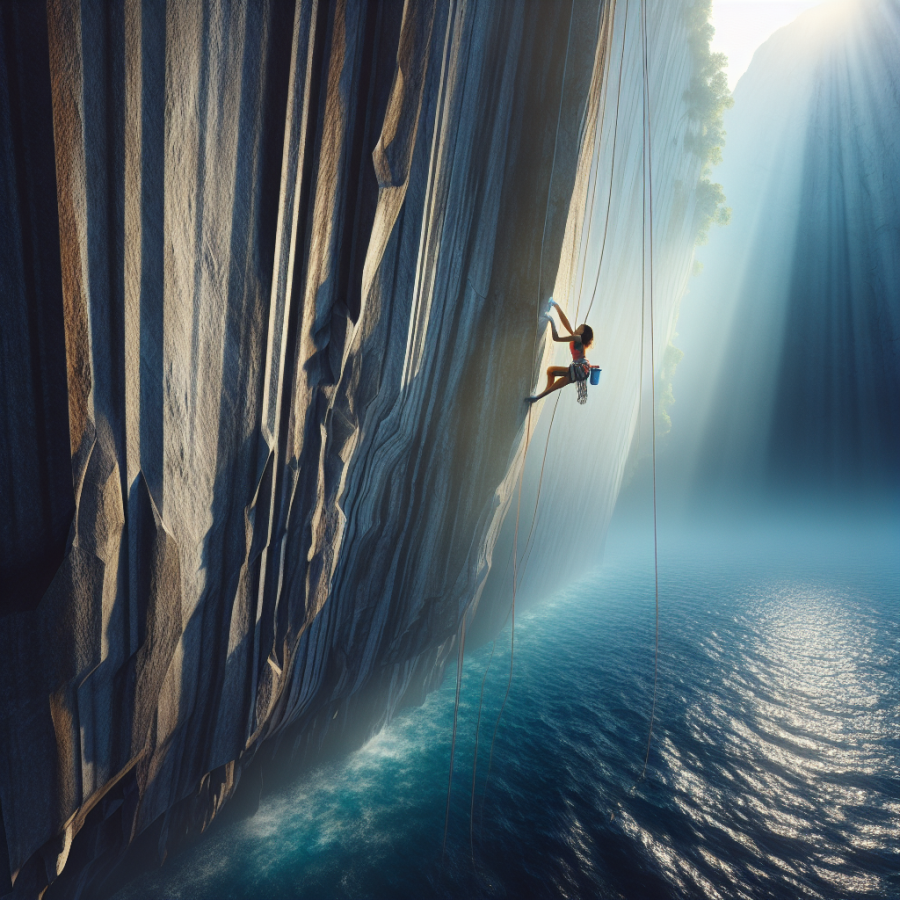Embracing the Rush: The Essentials of Deep-Water Soloing
Deep-water soloing, also known as psicobloc, is a pure form of climbing that merges the solitary intensity of bouldering with the exhilarating risk of sea cliff climbing. This thrilling sport involves scaling rock faces that rise above deep bodies of water, providing a natural safety net for climbers. Unlike traditional rock climbing, deep-water soloing doesn't involve ropes or harnesses, leaving the climber free to move and relying solely on their skill, strength, and mental fortitude. For those drawn to the raw challenge of this sport, understanding its essentials is paramount for both enjoyment and safety.
**Safety Precautions and Assessing Risks**
Before anything else, safety should be your top priority. Start by knowing the area's tides and currents. Prepare for the possibility of changing weather conditions and understand how they might affect the climbing route and the water below. Remember, water depth can greatly influence the safety of a fall. The climber must ensure there is a sufficient depth to prevent injury upon impact, which typically means a minimum depth of around 12 feet or more, depending on the height from which you're climbing. Inspecting the landing zone for submerged rocks or hazards is essential before attempting a climb.
**Physical Preparation and Climbing Technique**
Deep-water soloing demands a high level of physical strength and endurance. Key to success is a climber's ability to navigate routes that often feature overhangs or require dynamic movements. To build the necessary strength, climbers should focus on training that enhances grip, core, and upper body power. Technique drills for efficient movement and skills like dead hangs or pull-ups can be crucial for developing the stamina needed for longer climbs.
A refined climbing technique is equally vital in deep-water soloing. Practicing on bouldering walls can help improve problem-solving skills and dynamic movement. Since falling is an inherent part of the sport, climbers must also practice safe falling techniques to avoid injury. This includes knowing how to position the body when hitting the water to minimize impact.
**Equipment Essentials**
Although deep-water soloing is minimalistic in terms of gear, there are still some essentials. A pair of well-fitting climbing shoes is crucial for maintaining grip on the rock face. Additionally, many climbers wear wetsuits to help maintain body temperature in cooler waters and provide a small measure of protection against abrasion and impact. Chalk is also a climber's ally, improving grip by keeping hands dry.
Read also:
The Fate of Golf in the 2024 Olympics: Will it Make the Cut?"
Navigating Vertical Waters: Techniques and Safety in Ocean Cliff Climbing
Deep-water soloing, also known as psicobloc, is a form of rock climbing performed on sea cliffs at high tide, challenging athletes to navigate vertical waters without the use of ropes or harnesses. This extreme sport combines the thrill of free solo climbing with the safety net of water below—assuming climbers fall, they plunge into the ocean. Despite this safety aspect, there are still significant considerations and precautions that climbers must adhere to for a safe and enjoyable experience.
The first step in ocean cliff climbing is to carefully evaluate the conditions before attempting a climb. Tides and wave patterns can significantly impact both the difficulty of a climb and the risk involved. Climbers need to understand local tide tables, ideally selecting a window where the water level is high enough to ensure a safe landing but not so high that it increases the risk of being washed against the cliffs.
Water depth is also a critical safety factor. Before engaging in deep-water soloing, it’s important to check that the water beneath the climbing area is sufficiently deep and free of submerged rocks or dangerous marine life. Experienced climbers often scout the water by swimming around the base of the cliff to ensure it is safe for potential falls.
Climbers should recognize their limits and climb within their abilities, given there's no protective gear to arrest a fall. They must pay close attention to their level of fatigue, as tiredness can lead to mistakes and the higher risk of injury. Furthermore, climbing techniques like overhangs and traverses that may be familiar on traditional routes can feel entirely different when performed above water, adding to the physical strain as the body engages different muscle groups.
Considering the rock type and conditions is peculiar to ocean cliff environments. Saltwater can make holds slick and erode the rock, changing the nature of climbable routes over time. Climbers need to evaluate the integrity of holds before putting full weight on them and be prepared for varying grip conditions due to water, algae, and other marine factors.
Rescue plans are essential in ocean cliff climbing. Athletes should always climb with a partner or have someone watching from a boat or the shore who can assist in case of an emergency. Carrying a waterproof communication device can be a lifesaver when immediate assistance is required.
Climbers must also respect the local environment and wildlife, which means being mindful of bird nesting sites or protected areas on sea cliffs and avoiding any disturbance or damage to local flora and fauna.




